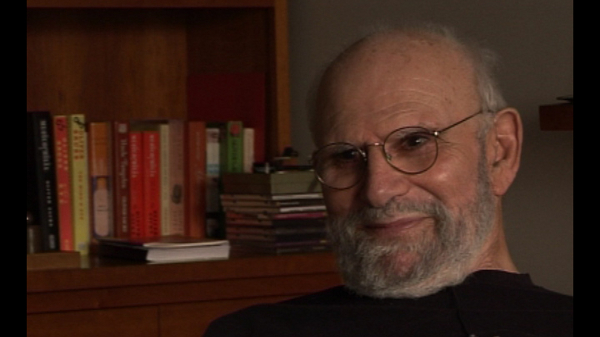NEXT STORY

Jonathan, Eric and I were never meant to be scientists
RELATED STORIES

NEXT STORY

Jonathan, Eric and I were never meant to be scientists
RELATED STORIES


|
Views | Duration | |
|---|---|---|---|
| 81. Influences? | 501 | 00:56 | |
| 82. The length of my depression | 1306 | 00:35 | |
| 83. The missing parts of Uncle Tungsten | 501 | 00:27 | |
| 84. What I regret about Oxford | 742 | 00:33 | |
| 85. An embarrassment to UCLA | 685 | 02:11 | |
| 86. Competitive weightlifting | 1071 | 00:29 | |
| 87. My strength saves a patient from death | 1358 | 01:42 | |
| 88. Jonathan, Eric and I were never meant to be scientists | 508 | 00:29 | |
| 89. My failure as a 'real' scientist | 557 | 00:48 | |
| 90. My missing book on myoclonus | 431 | 02:04 |


There was one patient – I think this has become legendary – there, who had a... a very nasty fungus infection, there’s a fungus called Coccidioidomycosis in California, and he had Cocci meningitis. And one day he coned. ‘Coning’ is neurological slang for someone who suffers a... what’s really a catastrophic thing in which the brain and the... what are called the tonsils of the cerebellum, the lowest part of the brain, gets sucked through the foramen magnum into the spinal cord, and this... this leads to prompt death. But I was seeing this man along with a colleague, Lew Rossner, and he coned, and without thinking I... I held him upside down, and he deconed. So... but I think you may remember when we were at UCLA, [Chris] Hermann mentioned that, so... but, anyhow, I think probably UCLA and, perhaps, California was glad to see the last of me. I... although that was a... a bad time because this was also... I transferred in the middle of my... my drug time.
Oliver Sacks (1933-2015) was born in England. Having obtained his medical degree at Oxford University, he moved to the USA. There he worked as a consultant neurologist at Beth Abraham Hospital where in 1966, he encountered a group of survivors of the global sleepy sickness of 1916-1927. Sacks treated these patients with the then-experimental drug L-Dopa producing astounding results which he described in his book Awakenings. Further cases of neurological disorders were described by Sacks with exceptional sympathy in another major book entitled The Man Who Mistook His Wife For A Hat which became an instant best seller on its publication in 1985. His other books drew on his rich experiences as a neurologist gleaned over almost five decades of professional practice. Sacks's work was recognized by prestigious institutions which awarded him numerous honours and prizes. These included the Lewis Thomas Prize given by Rockefeller University, which recognizes the scientist as poet. He was an honorary fellow of both the American Academy of Arts and Letters and the American Academy of Arts and Sciences, and held honorary degrees from many universities, including Oxford, the Karolinska Institute, Georgetown, Bard, Gallaudet, Tufts, and the Catholic University of Peru.
Title: My strength saves a patient from death
Listeners: Kate Edgar
Kate Edgar, previously Managing Editor at the Summit Books division of Simon and Schuster, began working with Oliver Sacks in 1983. She has served as editor and researcher on all of his books, and has been closely involved with various films and adaptations based on his work. As friend, assistant, and collaborator, she has accompanied Dr Sacks on many adventures around the world, clinical and otherwise.
Tags: coning, Coccidioidomycosis, Cocci meningitis
Duration: 1 minute, 42 seconds
Date story recorded: September 2011
Date story went live: 02 October 2012